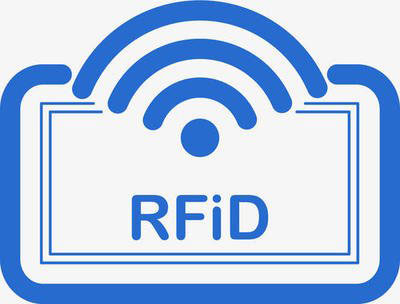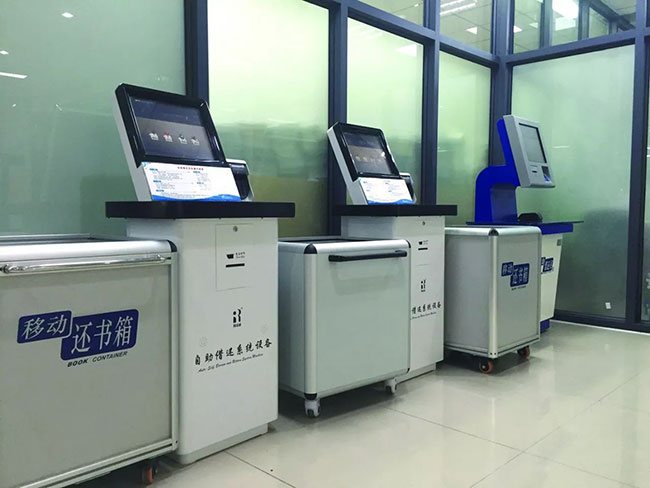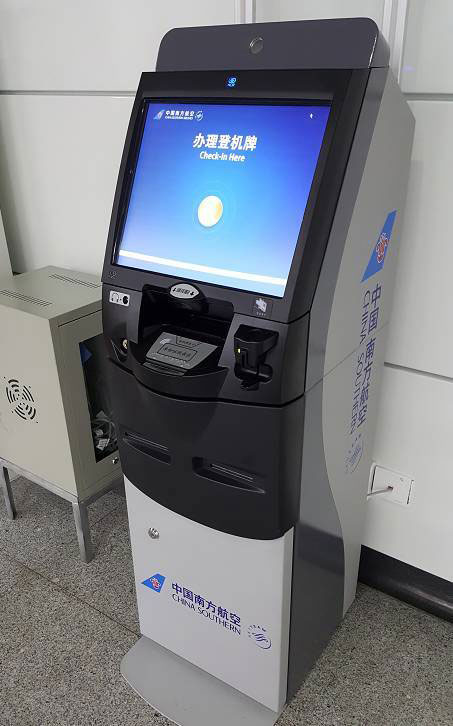Written By Eva Wen On 3rd December 2022
The composition of RFID technology
RFID can first be simply divided into hardware layer and software layer, hardware layer for: electronic tag (Tag) and read-write (Reader & Writer); software layer for data exchange and management system.
The electronic label (Tag) is mainly composed of upper antenna, coupling element and integrated chip. Each electronic label has the only electronic code, through the electromagnetic wave and the read-write carries on the data exchange, has the intelligent read-write and the encryption communication function.
The read-write mainly by the wireless transceiver module, the antenna, the control module and the interface circuit composition.
The data exchange and the management system mainly carries on the data information to collect, the storage, the management and the further processing, uses for the user. As well as to the electronic label carries on the read-write control.

The working principle of RFID
RFID technology's basic working principle is actually not complicated: the read-write will send the radio frequency signal, after encoding loads to the high frequency carrier wave signal, then sends outward by the antenna.
The electronic label which enters the read-write work area receives this signal, the relevant circuit of the chip inside the card carries on the multiplication rectification, the modulation, the decoding, the decryption, then the command request, the password, the permission and so on carries on the judgment, the electronic label then carries on the processing according to the command.

What is the technical core of RFID?
The chip is undoubtedly the first and foremost one of the core technologies in most electronic information products.
RFID chips are divided into tag chips and reader chips. Take the tag chip for example, it integrates all the circuits other than the tag antenna and matching line, including RF front-end, analog front-end, digital baseband and memory units and other modules. The basic requirements of the chip is light, thin, small, high stability and low price.
In China, some manufacturers have the ability to develop and produce their own low-frequency, high-band chips, in small size, low power consumption have also achieved certain results, and the price compared to foreign manufacturers have a price advantage of about 30% or more. It is understood that the current domestic independent research and development, and has been put into production RFID chip manufacturers are Shanghai Fudan Microelectronics, Faraway Valley, Juchen Semiconductor and so on.

RFID technology's 6 advantages
1. No visible, batch reading, a large number of RFID tags can be read by the reader at the same time, fast, batch reading, a time can read hundreds or even thousands of tags. Can also identify high-speed, moving objects, such as trains, buses, etc.
2. High holding power, electronic tags can store more information, such as production date, incoming date, etc., but also can be repeatedly rewritten, repeated use. After reading the data also instantly uploads the system to be processed, also can realize the traceability to the product.
3. Reading distance is far, according to the power of the reader and antenna gain rate, reading distance can range from several tens of centimeters to several meters.
4. Global uniqueness, can not be copied, each RFID tag is unique, in the process of production tag, it has been bound to the tag and commodity information, so in the subsequent circulation of goods, use process, this tag is the only representative of the corresponding piece of goods.
5. Long shelf life. RFID tags with waterproof, anti-magnetic, corrosion-resistant, high-temperature characteristics. Such as laundry industry, animal feeding industry, medical industry, etc., all have high requirements for tag durability. The current general preservation time of the tag can reach several years, a dozen years or even decades.
6. High security. One of the core technologies of RFID tags is the chip, it is known that the difficulty of chip development, the high cost. For counterfeiters, the cost of replication is too high, and difficult to break through the technical barriers. In addition, electronic tags have a reliable security encryption mechanism, China's second-generation resident ID card is also the use of RFID technology.

Commercial Applications of RFID
In addition to the retail and apparel industries, RFID technology is being widely promoted along with the rapid development of China's economy. RFID is now being used commercially to varying degrees in industries such as financial payments, logistics, retail, manufacturing, medical, identification, anti-counterfeiting, asset management, transportation, food, animal identification, libraries, automotive, aviation, and military.
In manufacturing solutions, our SELF CHECKING KIOSK can target real-time monitoring of production data, quality tracking. In medical solutions, our ALL-IN-ONE KIOSK MACHINES can be used for patient or doctor identification. In school electronic security solutions, our TOUCH INFO KIOSK can identify various electronic documents such as electronic passports, ID cards, student ID cards, etc. In large supermarkets, our SELF SERVICE KIOSK MACHINES can be used for anti-counterfeit identification of valuable items (jewelry, wine, tobacco, medicine) and anti-counterfeit of tickets. In intelligent transportation solutions, our CHECK-IN&CHECK-OUT MACHINES can be used for high-speed toll collection, cab management, bus hub management, railroad locomotive identification, etc. In airline solutions, our MULTI-FUNCTIONS TOUCH KIOSK can be used to track passenger tickets and luggage packages. Moreover, there are already a small number of companies that already use RFID technology: UPS, DHL, FEDEX, ZARA, HERMAN KAY, AMERICAN APPAREL, etc.
As one of the key technologies to build the Internet of Things, in recent years has received more and more attention, and enterprises for the management of goods and labor costs control, RFID will also be widely adopted in all walks of life. As the world's manufacturing base, China already has the world's largest RFID application market, I believe that the future in the government to promote, unified standards and gradually declining costs, with the new wind application of unmanned retail, will bring a high growth opportunity for RFID.
 Eva Wen
Eva Wen
Eva Wen is the Digital Marketing Executive at CY Digital Signage.
